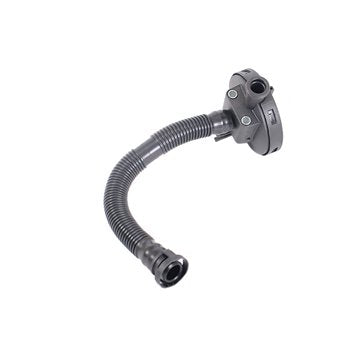Improve productivity with a powerful clp engine.
Improve productivity with a powerful clp engine.
Blog Article
How a Clp Engine Can Boost Effectiveness in Various Industries
The arrival of CLP engines notes a considerable shift in operational effectiveness throughout numerous fields, driven by their ability to enhance gas consumption and minimize downtime. Industries such as manufacturing and logistics stand to obtain substantially from their durable layout and constant power result, which promise to enhance procedures and boost performance. As companies progressively focus on sustainability along with efficiency, the duty of CLP engines becomes a lot more vital. What remains to be seen is how these advancements will certainly form the future landscape of industrial procedures and their effect on wider financial trends (clp engine).
Review of CLP Engines
CLP engines, or Constant Liquid Propellant engines, stand for a substantial improvement in propulsion modern technology, particularly for space applications. These engines utilize a constant feed system that enables the sustained expulsion of propellant, causing improved effectiveness and performance compared to typical solid or hybrid propulsion systems. By keeping a constant circulation of liquid propellant, CLP engines can attain much more specific thrust control, which is important for navigating spacecraft in different objective situations.
The layout of CLP engines incorporates innovative products and innovative fuel monitoring systems. clp engine. This leads to decreased weight and increased dependability, crucial elements for long-duration space missions. Furthermore, the continuous operation decreases the danger of combustion instability, a typical difficulty in traditional rocket engines.

Advantages in Manufacturing
The production of Continual Liquid Propellant (CLP) engines presents numerous noteworthy benefits that improve both efficiency and cost-effectiveness. One of the primary benefits is the streamlined production process, which minimizes the complexity linked with traditional propulsion systems. By making use of liquid propellant, makers can attain better accuracy in engine efficiency, bring about maximized power output and reduced waste.
Additionally, CLP engines help with a greater degree of modularity, permitting less complicated combination into different production lines. This versatility can dramatically decrease preparations and improve general operational versatility. Making use of CLP modern technology likewise tends to reduce the demand for comprehensive maintenance due to less relocating parts, which converts into lowered downtime and operational costs.

Applications in Logistics
Leveraging Continual Liquid Propellant (CLP) engines in logistics offers considerable advantages in operational performance and integrity. These engines supply a robust remedy for various transport demands, allowing the smooth movement of products throughout huge ranges. The inherent design of CLP engines permits for regular power outcome, which equates into smoother and much more foreseeable transportation timetables.
One of the essential applications of CLP engines in logistics is in durable freight learn the facts here now transport, where they can drive both ground and airborne automobiles. Their capacity to maintain high performance under differing load conditions makes sure that shipment timelines are fulfilled, thus improving client satisfaction. Additionally, CLP engines can be incorporated right into automated logistics systems, facilitating real-time monitoring and optimizing path preparation.
In addition, the toughness of CLP engines lowers upkeep downtime, enabling logistics firms to optimize their operational abilities. This is especially helpful in warehousing procedures, where performance in taking care of and moving goods is crucial. As logistics remains to advance, the integration of CLP engines represents a forward-thinking method that not just boosts efficiency yet likewise supports the sector's growing needs for dependability and rate.
Influence On Power Efficiency
How do Continual Fluid Propellant (CLP) engines improve power efficiency in transportation? CLP engines use a regular flow of liquid gas, optimizing burning processes and maintaining a secure thrust result. This style decreases power losses connected with conventional combustion engines, where fuel delivery can vary and cause inadequacies.
The constant procedure of CLP engines enables an extra efficient thermal cycle, resulting in higher details impulse contrasted to conventional engines. clp engine. This converts to reduced fuel usage for the exact same amount of job done, dramatically lowering functional expenses throughout different transportation markets, including aviation and maritime markets
Additionally, the ability of CLP engines to preserve optimal performance under differing tons problems decreases the demand for constant acceleration and slowdown, additionally improving fuel efficiency. Improved energy efficiency not just adds to cost financial savings but likewise causes lower greenhouse gas discharges, aligning with global sustainability objectives.
Future Trends and Innovations
Arising improvements in Continuous Fluid Propellant (CLP) engine innovation promise to transform the landscape of transportation efficiency and sustainability. As sectors pivot toward greener choices, CLP engines stand at the center, integrating innovative products and design methods that boost efficiency while minimizing ecological impact.
Among the most appealing YOURURL.com fads is the adoption of crossbreed systems that combine CLP engines with eco-friendly power sources. This synergy can enhance gas intake and decrease emissions, lining up with global sustainability goals. Developments in computational liquid dynamics (CFD) are helping with the style of even more aerodynamically reliable engines, leading to minimized drag and boosted fuel performance.
Moreover, the development of smart tracking systems is set to improve functional performances. These systems take advantage of data analytics and IoT modern technology to maximize engine efficiency in real-time, guaranteeing that the engines operate within their most effective criteria.
As study remains to discover different propellant formulas-- such as biofuels and synthetic fuels-- the future of CLP engines looks appealing. By taking advantage of these developments, sectors can not just enhance their effectiveness but additionally contribute considerably to a cleaner, more lasting future in transport.
Verdict
In final thought, CLP engines represent a significant development in effectiveness across several sectors. The combination of sophisticated materials and fewer relocating parts lessens upkeep demands, while alignment with sustainability objectives placements CLP engines as a critical technology for the future.
Report this page